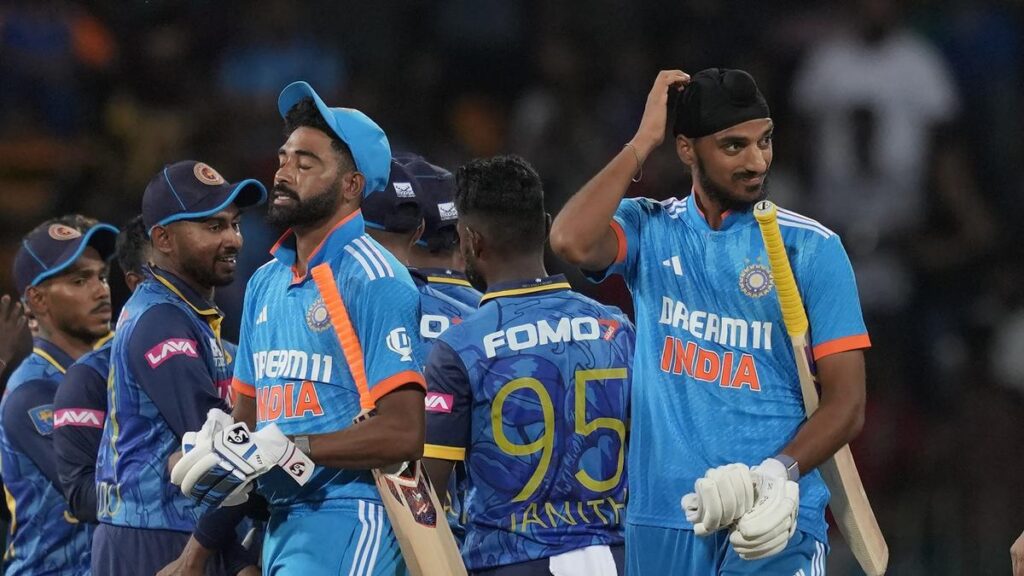Many fans are curious why there was no Super Over to break the tie, like in the third T20I between the two teams played in Pallekele.
The first ODI between India and Sri Lanka ended in a tie, with both teams scoring 230 runs. The match took place on August 2 at the R. Premadasa Stadium in Colombo. Even though the game ended in a tie, some see it as a win for Sri Lanka since they managed to hold off India despite their low score.
Why there was no Super Over?
The first ODI match between India and Sri Lanka ended in a tie, with no further play after that. According to ICC rules, if a T20 International match is tied, a Super Over is used to decide the winner. However, this rule does not apply to ODI cricket unless it is a knockout game in a tournament.

In ODI cricket, a Super Over is only used in knockout games or multi-nation tournaments. So far, Super Overs have been used in only three ODI matches. One of the most famous instances was the 2019 World Cup final between England and New Zealand, which also ended in a tied Super Over, with the winner decided by the number of boundaries scored. Another instance was in 2020, during a match between Zimbabwe and Pakistan. The most recent use was in 2023 during the ICC Cricket World Cup Qualifier match between West Indies and the Netherlands.
Rohit Sharma-Gautam Gambhir duo eyes to open account
The Indian team will aim to move past this tie and come back with a win in the upcoming second ODI at the same venue in Colombo on August 4 (Sunday). Rohit Sharma and Gautam Gambhir will be looking for their first win together and to gain an advantage in the series.

